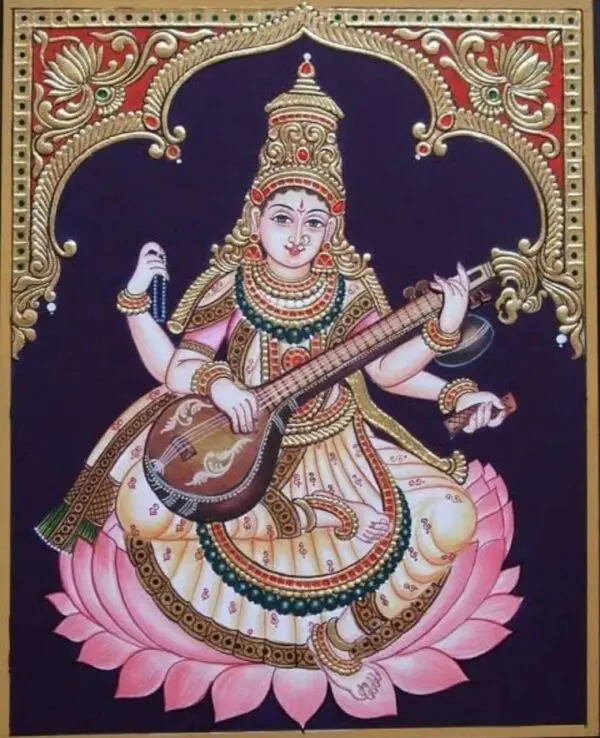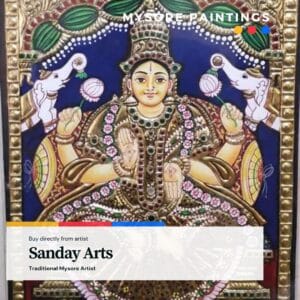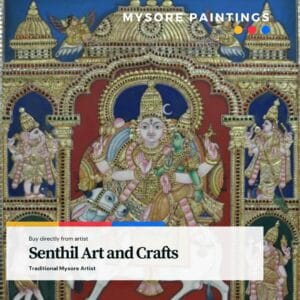Mysore Painting
Mysore Painting is a form of classical South Indian painting that evolved in the Mysore city of Karnataka. It’s at its zenith under the patronage of Wodeyars, Mysore being under their reign.
The art of the Mysore school reached its peak during the rule of Raja Raja Wodeyar I. The occupation of artists dispersed after his death though, and the school ceased to exist.
Mysore paintings are often mistaken for Tanjore paintings, because the colors are very similar at first glance. However, closer inspection will reveal that Mysore paintings have finer brush work & more delicate colors, while Tanjore paintings have a rougher, more bold style with broader brush strokes.
In Mysore paintings, gesso is a low relief, intricate substance that is used in the background of a painting. This helps to bring out details such as clothes, jewelry and architectural features. Whereas in Tanjore school gesso has a lot of relief and is typically used for depictions or images that have deeper meanings or symbols behind them.
Mysore paintings are known for their gold leaf paint and often depict Hindu gods, goddesses or scenes from mythology. The natural beauty, intricacy and graceful quality of these paintings make them a favorite among many people.
The process of producing a Mysore painting typically follows a number of steps. The first step involves making a sketch on the basis, usually with the help of a preliminary sketch drawn with ink or charcoal or pasting cartridge paper on to a wooden base. Then paste is made of zinc oxide and Arabic gum, known as ‘gesso paste’.
Then, gold foil is pasted onto the surface. The rest of the painting is prepared with the help of watercolors. After the painting is fully dried, it is covered with a thin paper and rubbed lightly with a smooth soft stone.
The sketches were made with the help of charcoal, which was prepared by burning tamarind twigs in an iron tube. The brushes were made of different materials, like squirrel hair, camel hair, goat hair, etc.

The work was taken up in the morning when the base of the gold work on the painting was still moist so as to hold the gold foil firmly. After allowing the painting to dry, glazing was carried out by covering the painting with thin paper and rubbing over it with a soft glazing stone known as kaslupada kallu. When the thin paper was removed the painting shone brightly and looked resplendent with the combination of gold and a variety of colours.



